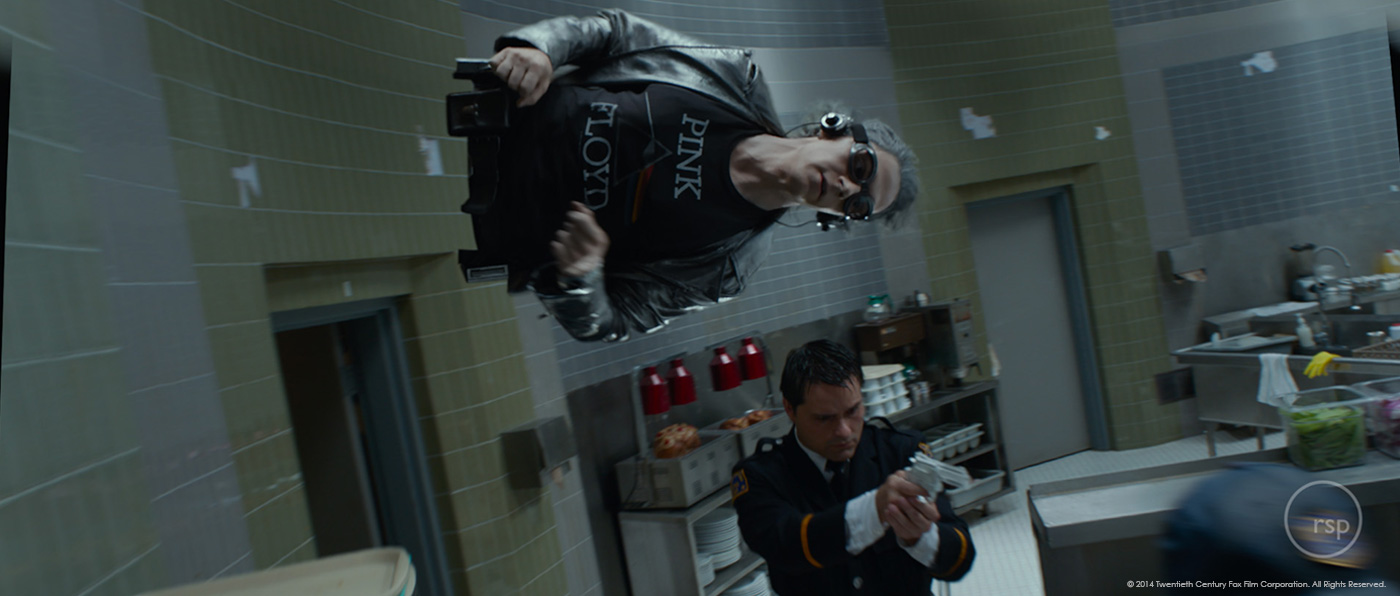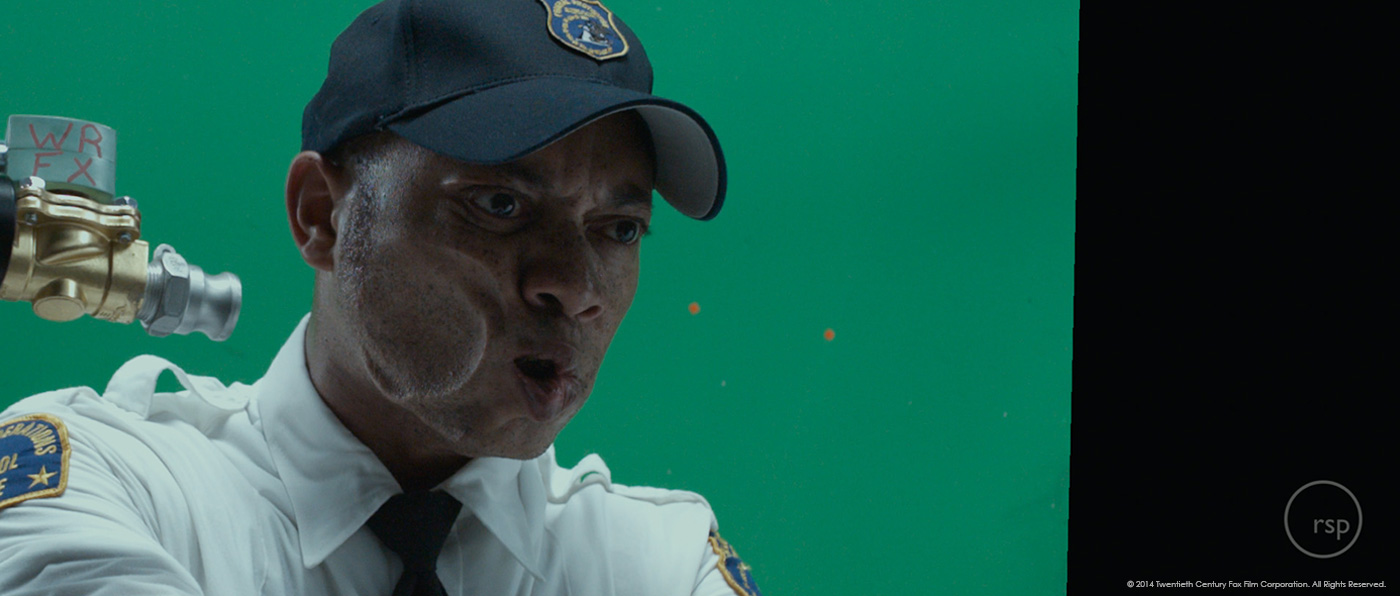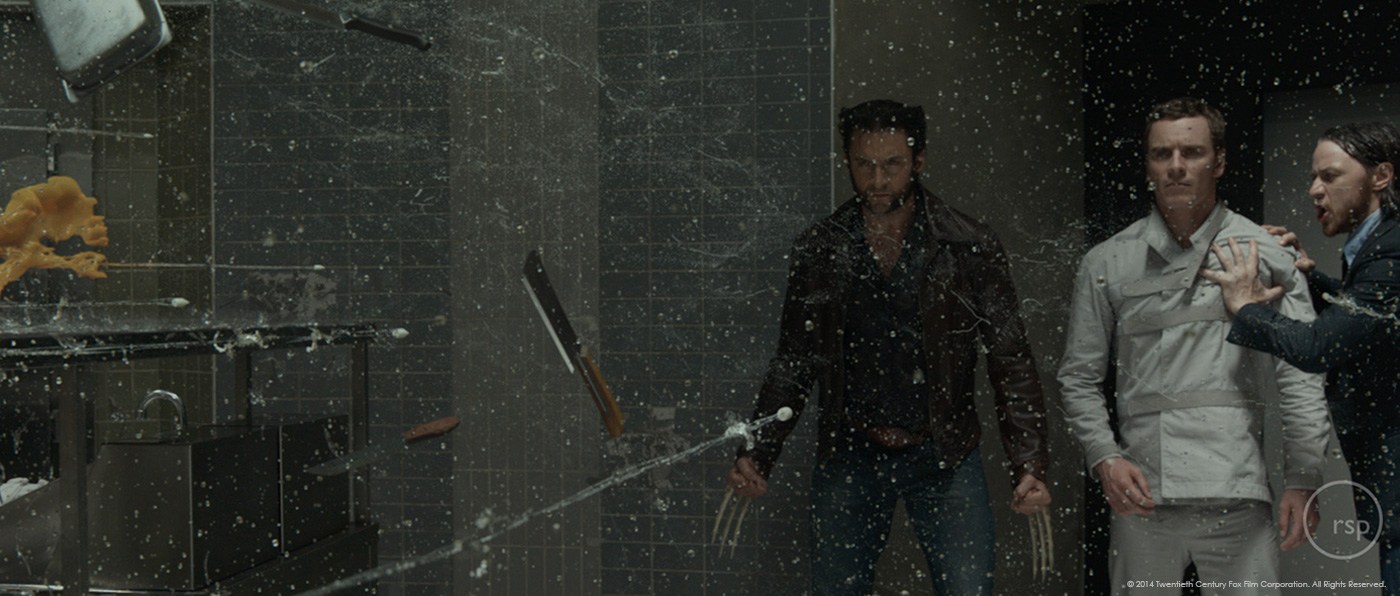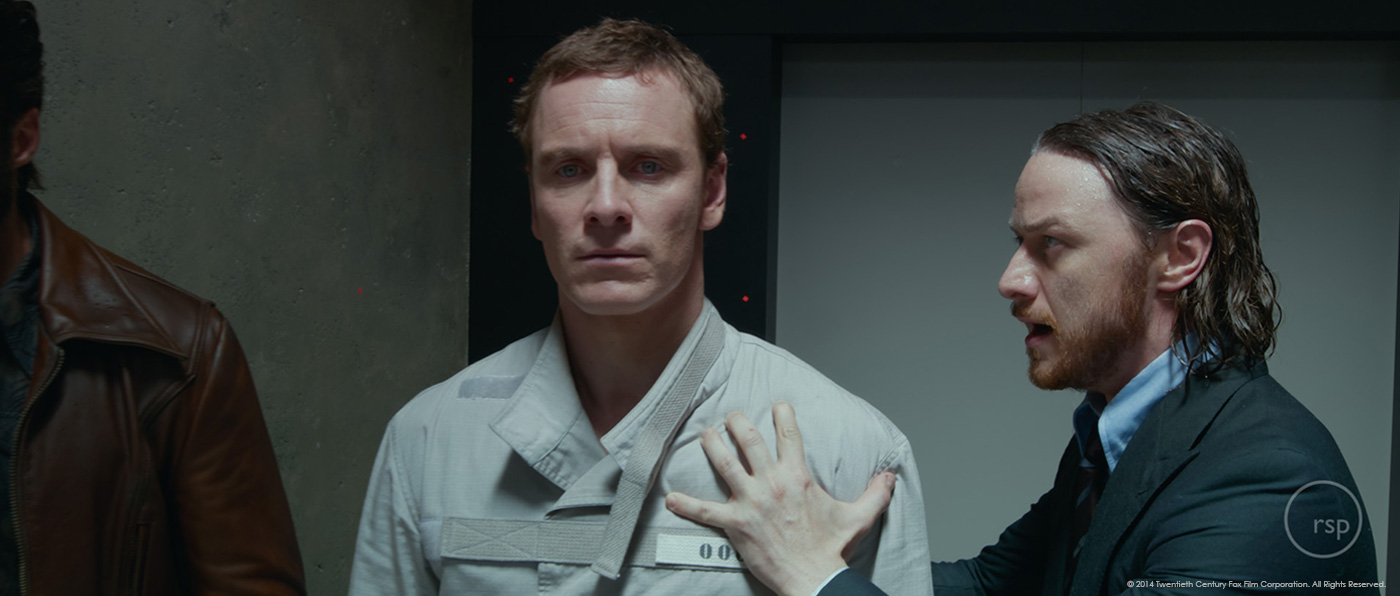Last summer, Tim Crosbie explained in details about the work of Rising Sun Pictures on THE WOLVERINE. He is back with superheroes and talks to us about his work on X-MEN: DAYS OF FUTURE PAST.
How did you got involved on this show?
We were approached by production to bid on the sequence, and were sent a copy of the previz. We had recently delivered work for 20th Century Fox on THE WOLVERINE, and had previously worked with VFX Supervisor Richard Stammers on PROMETHEUS, and Director Bryan Singer on SUPERMAN RETURNS.
How was the collaboration with director Bryan Singer?
Bryan had such a great vision for this sequence and Richard Stammers gave us a very clear brief of exactly what he was after. Along with the previz, we very quickly got an idea of the complexity & nuances within the scope of the work that we had to achieve.
What was his approach about the visual effects?
There was a really good understanding of how best to use all of the available tools to make the process as efficient as possible. This included previz to work out the timing (comic beats, frame composition, etc), which was adhered to as much as possible when the shoot occurred, as well as onset methods such as high speed photography, specialist stunt rigs, and practical special effects solutions.
We went through a few iterations with Richard Stammers before he would bump these up to Bryan to give feedback. Thanks to the accuracy of the previs, and the excellent brief, Bryan pretty much signed off on just about everything for where we were heading, sometimes with clear comments, otherwise with a ‘that’s cool, keep going’.
How did you work with Production VFX Supervisor Richard Stammers?
From the outset, we set up a delivery schedule with the client that ran from simple postviz to ensure that we were hitting the correct story points for the director (with regards to animation and timing of the bullets, props, etc). From that, we then moved into layout to confirm that all of the additional props and assets that we were adding were in the right place physically and weren’t getting in the way of telling the story. We then began showing FX R&D on the different fluid simulations and optical flow retimes. From that point on it was a matter of rolling out the elements in all of the shots. Overall it was an iterative process that allowed the RSP team to hone in on the key elements for each shot, and progressively deliver more complex and refined images with each delivery. We used cineSync and Skype for reviews with Richard Stammers which made for a very easy feedback process.
What did Rising Sun Pictures make on this show?
RSP worked on the Quicksilver Kitchen sequence. We added pretty much all of the static objects hanging in the air, props (vegetables, cutlery, pots, pans etc), and all the water droplets that Quicksilver runs through and turns in to a vaporised tunnel of water, as well as the bullets, muzzle flashes, vortex trails. The final composites were some of the most complex we’ve worked on.
All of this was done in stereo… except for three shots that had been captured in mono due to rigging constraints on the shoot, so our prepped plates had to be dimensionalised by StereoD using our stereo cameras as a guide for correct depth and we then pulled then back through out stereo pipeline.
How did you approach this super slow-motion sequence?
We knew going in to this that it would take a lot of detailed planning. The stereo cameras are moving through a world that is primarily going to be populated with CG objects – as a result the tracking, match moving and layout had to essentially be pixel perfect, because even the slightest error becomes very obvious very quickly. Once this foundation was in place, the rest of the sequence became an exercise in making things look cool rather than fixing things that weren’t quite right. The development of FX techniques for water droplets & complexity, muzzle flashes and bullet vortices, and the look development to ensure photo real props was an ongoing process.
One of our first tasks was using the LIDAR to recreate the kitchen environment in the computer. We then used the HDRI photographic reference from production to texture the geometry and rebuild the kitchen as a default lighting setup with the correct energy levels for assets to live within. This was used to help our FX guys in RnD for placing their simulations in a real world environment, without having to wait for shot-based lighting to be rolled out.
Did you received specific indications and references from the production?
Yes. Production gave us detailed previz, and a full onset data capture package including HDRI, LIDAR, cyberscans of props, witness cameras, lens information, lens grids etc. This wealth of information ensured that we could perfectly recreate the real-world photography in the computer. For some of the effects, such as slow motion water, we received high speed reference photography, some up to 3200fps that showed physical interaction with water streams and characters. Bryan Singer had a very clear vision of what he wanted and Richard Stammers gave us an excellent brief for what we had to hit.
Can you tell us more about the previz process?
Previz was created by The Third Floor, and we received it to bid to, and as a guide for the layout, composition and timing of FX elements that were not present in the live action plate.
How did you create the freezing elements?
The slow motion photographic reference gave us a good idea of what some of these elements looked like moving in slow motion, especially for the water-atomising events. We had to ensure that what we created felt like it should be there, everything need to fell real. We worked really hard to balance all of the cg elements with the live action elements in the scene.
To achieve this we needed a lot of detail in the water – for rain interaction, crowning splashes, the water dripping off benches and the mid-air rain drop events. For Quicksilver’s tunnel, each raindrop would create a high resolution splash that would atomise over time and turn in to a faint but highly-detailed trail. We had a system that would utilise a library of pre-made simulations of water droplets that would add complexity to interactions with the elements within the scene. For timing, we created simulations based on real physics and then creatively manipulated the timescale to retime the simulations within each shot to get the desired result.
What was the biggest challenge on this sequence and how did you achieve it?
The biggest challenge was managing the complexity and inter-dependencies between each of the shots. Continuity was paramount to ensure that the sequence flowed without any hiccups.
What do you keep from this experience?
From the very first day when I watched the previs, I knew this would be a cool sequence. I remember about three weeks before final deadline, I sat down in the theater and watched the whole thing all the way through, with sound, in stereo, and got goosebumps.
How long have you worked on this film?
Five and half months.
What was the size of your team?
46.
What is your next project?
We have a very busy 2014/2015, unfortunately I can’t go in to too much detail about that just yet.
A big thanks for your time.
// WANT TO KNOW MORE?
– Rising Sun Pictures: Dedicated page about X-MEN: DAYS OF FUTURE PAST on Rising Sun Pictures.
© Vincent Frei – The Art of VFX – 2014






































